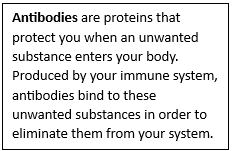- Courses
- GS Full Course 1 Year
- GS Full Course 2 Year
- GS Full Course 3 Year
- GS Full Course Till Selection
- Answer Alpha: Mains 2025 Mentorship
- MEP (Mains Enrichment Programme) Data, Facts
- Essay Target – 150+ Marks
- Online Program
- GS Recorded Course
- NCERT- First Ladder
- Polity
- Geography
- Economy
- Ancient, Medieval and Art & Culture AMAC
- Modern India, Post Independence & World History
- Environment
- Governance
- Science & Technology
- International Relations and Internal Security
- Disaster Management
- Ethics
- Current Affairs
- Indian Society and Social Issue
- CSAT
- 5 LAYERED ARJUNA Mentorship
- Public Administration Optional
- ABOUT US
- OUR TOPPERS
- TEST SERIES
- FREE STUDY MATERIAL
- VIDEOS
- CONTACT US
mRNA-Based Medicines
mRNA-Based Medicines
25-12-2023
Context
- Cells in our body produce mRNAs as instructions for making essential proteins. Researchers leverage this to correct faulty instructions and develop medicines.
- Most scientists studying mRNA aren't creating drugs, but understanding mRNA laid the groundwork for effective medicines like Covid-19 vaccines.
What is mRNA?
- Messenger RNA (mRNA) is a single-stranded RNA crucial for protein synthesis. It is created during transcription, using a DNA template.
- DNA transcription is the process of copying a segment of DNA into RNA. It's the first step in gene expression.
- mRNA's role is to transport protein information from the DNA in the nucleus to the cell's cytoplasm, where the protein-making machinery reads and translates the mRNA sequence into amino acids for protein formation.
Working of mRNA Vaccines
- mRNA vaccines involve introducing a fragment of mRNA corresponding to a viral protein, typically from the virus's outer membrane.
- The immune system recognizes the foreign protein, generating antibodies as part of a standard immune response.
- Antibodies persist in the body, enabling a swift response upon future exposure to the virus.
- Antibodies protect against infection by identifying, attaching to, and marking pathogens for destruction.
- Individuals receiving mRNA vaccines are not exposed to the virus, preventing infection.
Process of Making mRNA Vaccines
- Scientists identify a virus's external protein suitable for triggering an immune response. The chosen protein must differ significantly from the body's cells to avoid attacking them.
- DNA containing information for the target protein is identified. DNA is used to produce mRNA for the target protein.
- The mRNA is separated from the DNA to create the vaccine.
- The process is rapid and efficient, enabling the production of large mRNA quantities in a short timeframe.
Functions of mRNA
- mRNA (Messenger RNA) conveys crucial messages from DNA (Deoxyribonucleic acid) to the cell's machinery, guiding the creation of specific proteins.
- DNA is like a library of cookbooks (genes) containing recipes for various proteins.
- Around 100,000 proteins are vital for bodily functions like digestion and chemical reactions.
- When a cell requires a protein, it creates a copy, mRNA, composed of four building blocks (A, U, C, G). mRNA serves as a messenger, relaying protein-making instructions in three-letter words.
- Cells easily interpret this mRNA recipe to produce the needed protein. Cells efficiently recognize, utilize, and dispose of mRNA after fulfilling its role.
- Mutations or errors in DNA's recipe book can disrupt mRNA instructions, causing diseases.
Significance of mRNAs in Medicine
- Understanding how mRNAs instruct cells enables scientists to create custom codes for proteins, allowing tailored treatments. Flexibility in crafting new mRNA codes or modifying existing ones ensures personalized therapies.
- Manufacturing mRNA treatments is scalable and consistent, following a standardized process. Unlike traditional drugs with varied chemistry and methods, mRNA production's uniformity streamlines large-scale production.
- Cells naturally eliminate mRNA, ensuring mRNA treatments are not permanent. This adaptability allows easy dose adjustments to meet changing patient needs.
- Scientists can generate substantial mRNA quantities in labs, facilitating broader development and distribution of mRNA-based medicines.
- Clinical trials for mRNA-based vaccines extend to various diseases beyond COVID-19.
- Promising preventive treatments include vaccines for seasonal flu, herpes, respiratory syncytial virus, norovirus, Lyme disease, Zika, and shingles.
- mRNA therapies show potential in cancer treatment, leveraging the body's immune response for personalized approaches.
Future of mRNA-Based Medicines
- The future promises highly personalized, effective therapies with fewer side effects.
- mRNA-based medicine has the potential to address diverse diseases by precisely altering cellular processes and correcting protein deficiencies.
- Its ease of customization and production positions mRNA as a versatile tool, set to redefine treatment strategies across various medical conditions.



